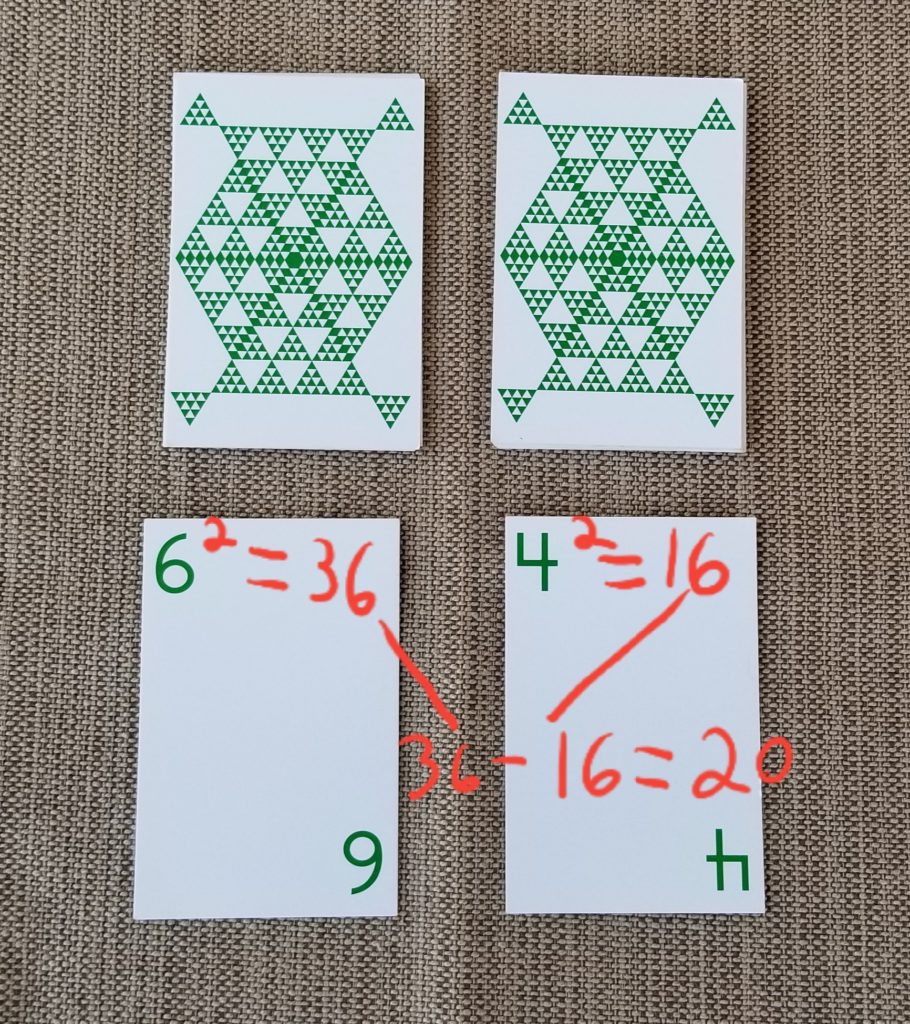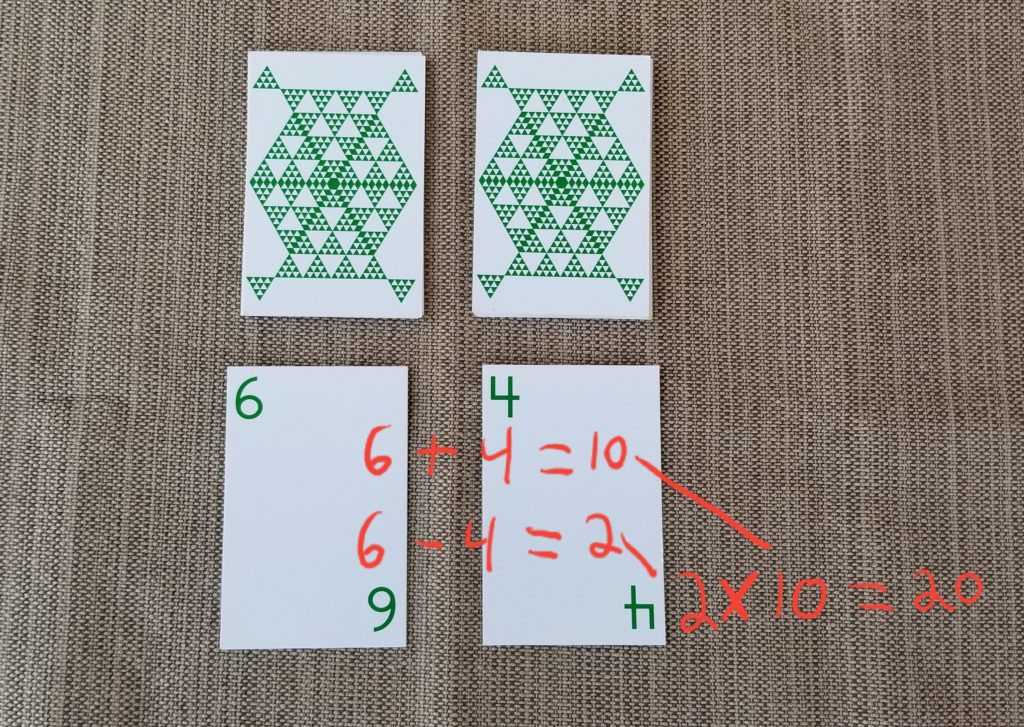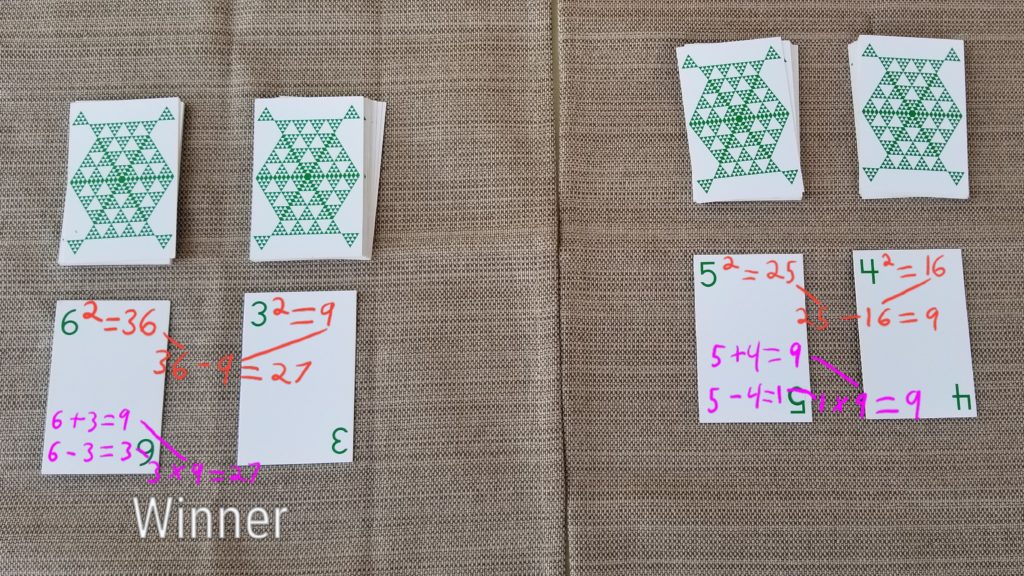As the summer temperature rises, you may be looking for a non-competitive game. The Difference of Two Squares, game P35 in the Math Card Games book, hits the spot. It’s like a puzzle that two people work on together.
You will need 20 basic number cards. Just a nice selection, no specific numbers are needed. Paper and pencil too. My kids like to mentally calculate the answers but your kids may appreciate paper and pencil, at least to write down the first hand as an example.
Chiara and Ian started this game by turning over two cards, a 6 and a 4. Ian squared each number and subtracted the answers.

6² = 36 and 4² = 16. Then 36 – 16 = 20.
Chiara added the 6 and 4, subtracted the 6 and 4, and then multiplied the two answers.

6 + 4 = 10 and 6 – 4 = 2. Then 10 × 2 = 20.
Their answers matched. Success! That’s the goal. After five hands, they switched roles so both got practice with the different approaches to the calculations.
Now, if you do want a competitive variation, you can try this game with four people: Each team of two has a stack of 20 basic number cards. Each stack should contain the same cards so that the chance of winning only depends on the shuffle and not on the contents of the deck. Play proceeds as above.

After each team determines their answers, the winning team has the highest score and takes the cards from that round. The team with the most cards at the end of the game wins.
